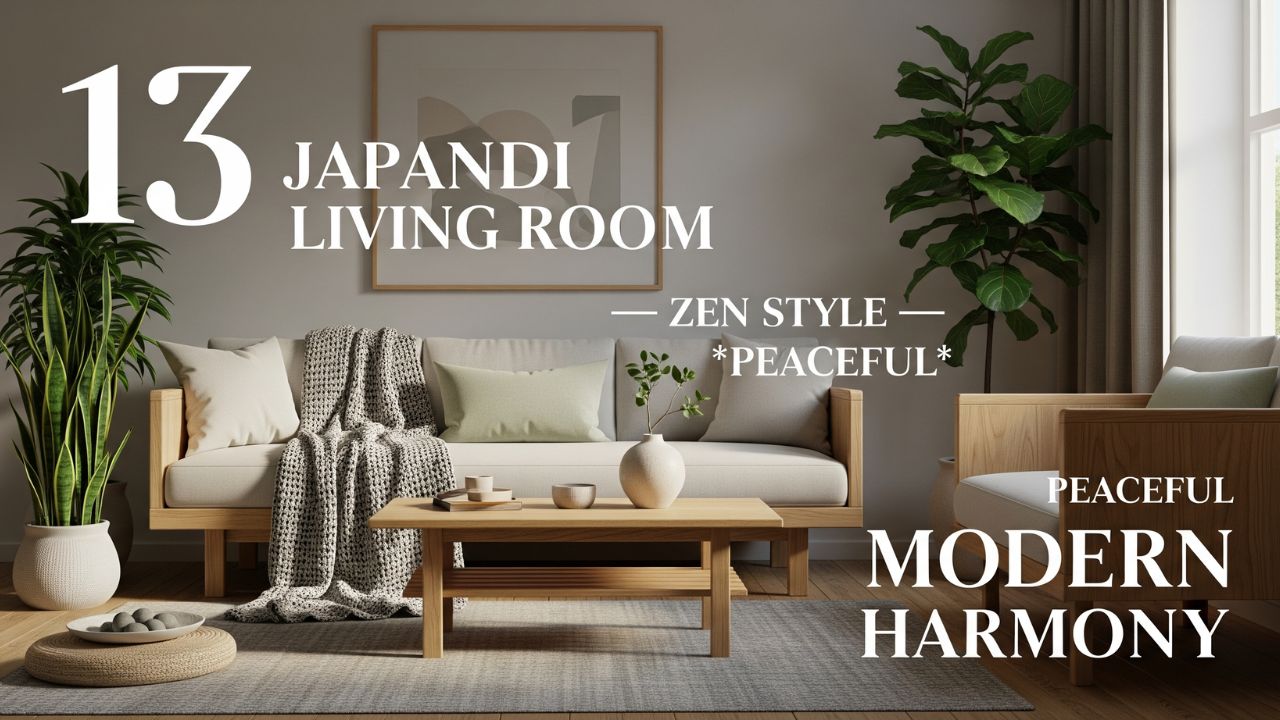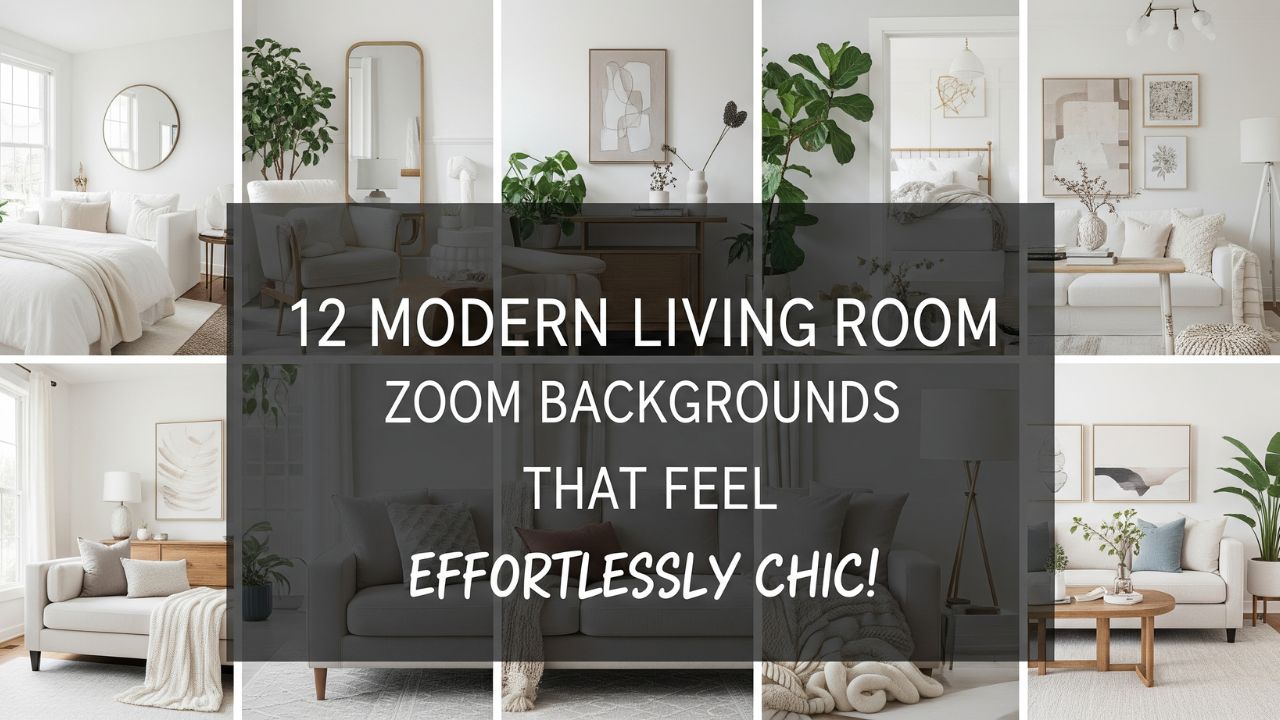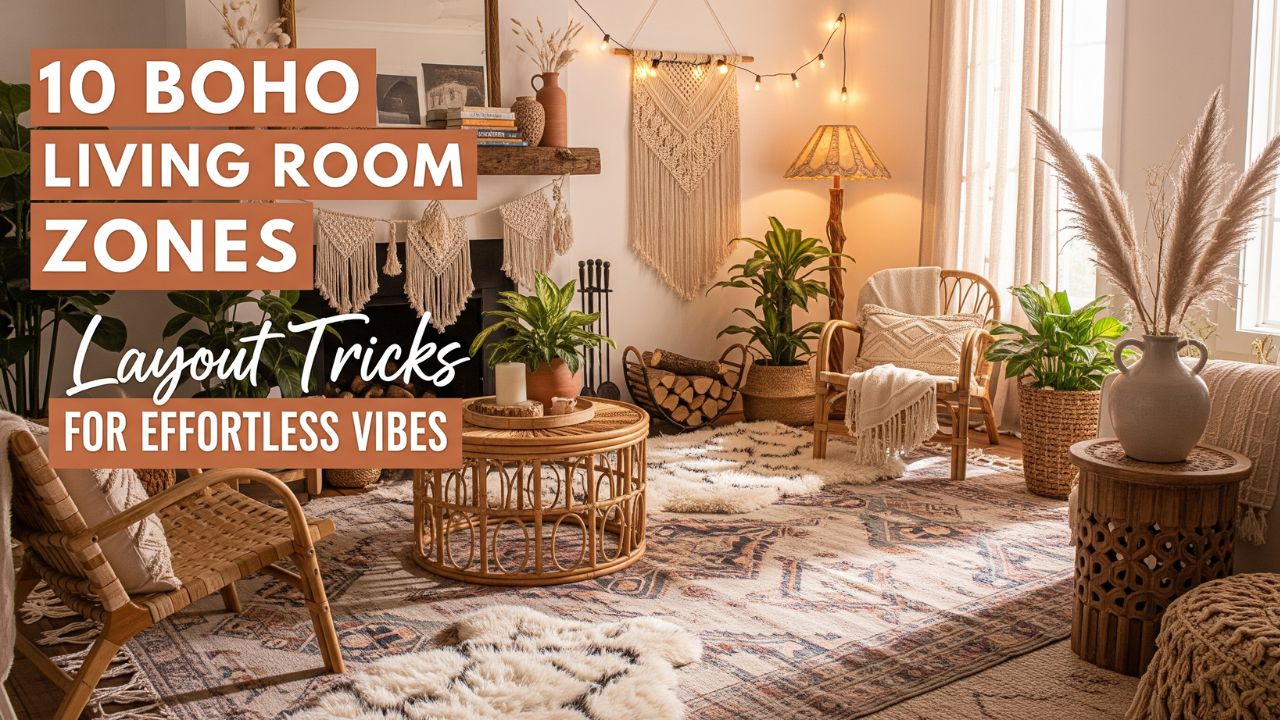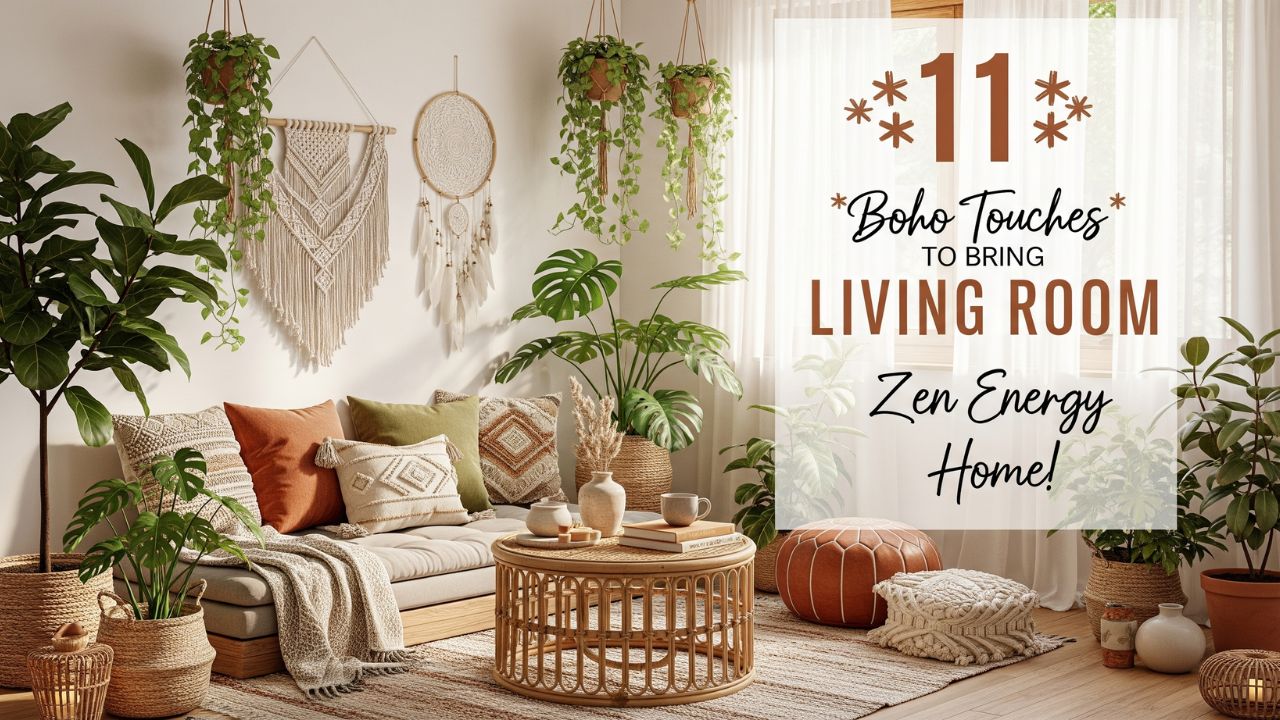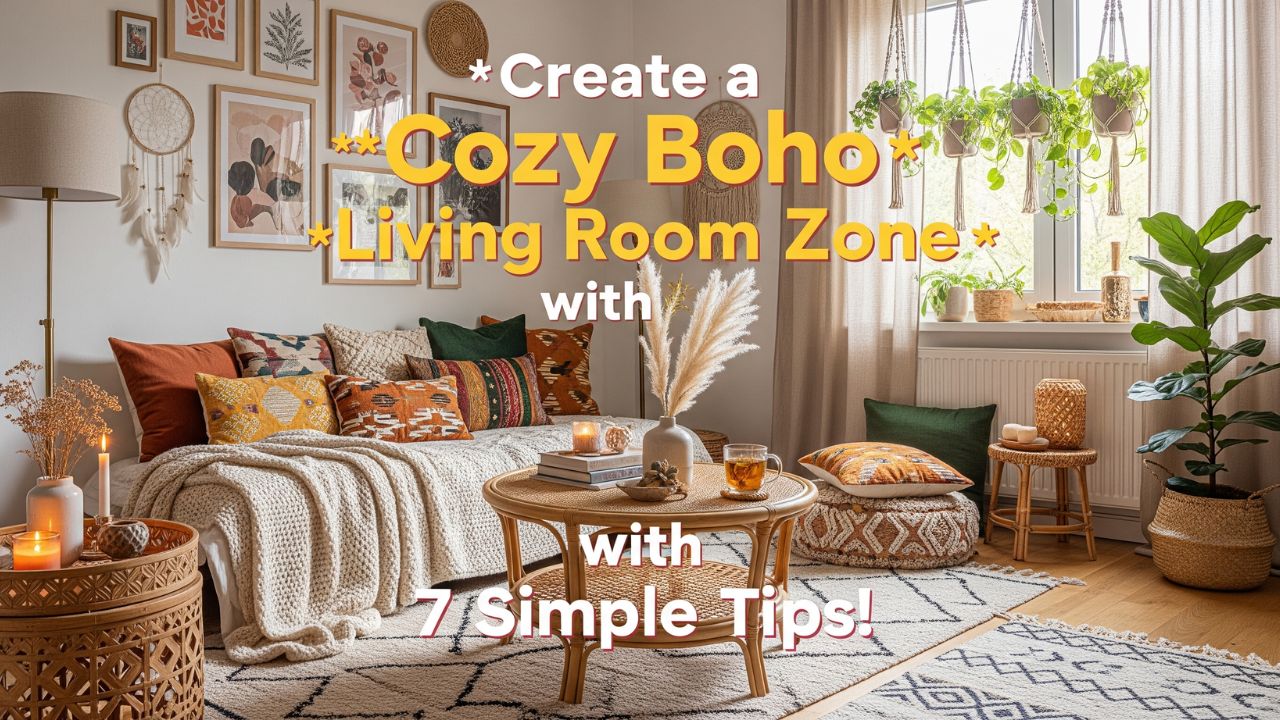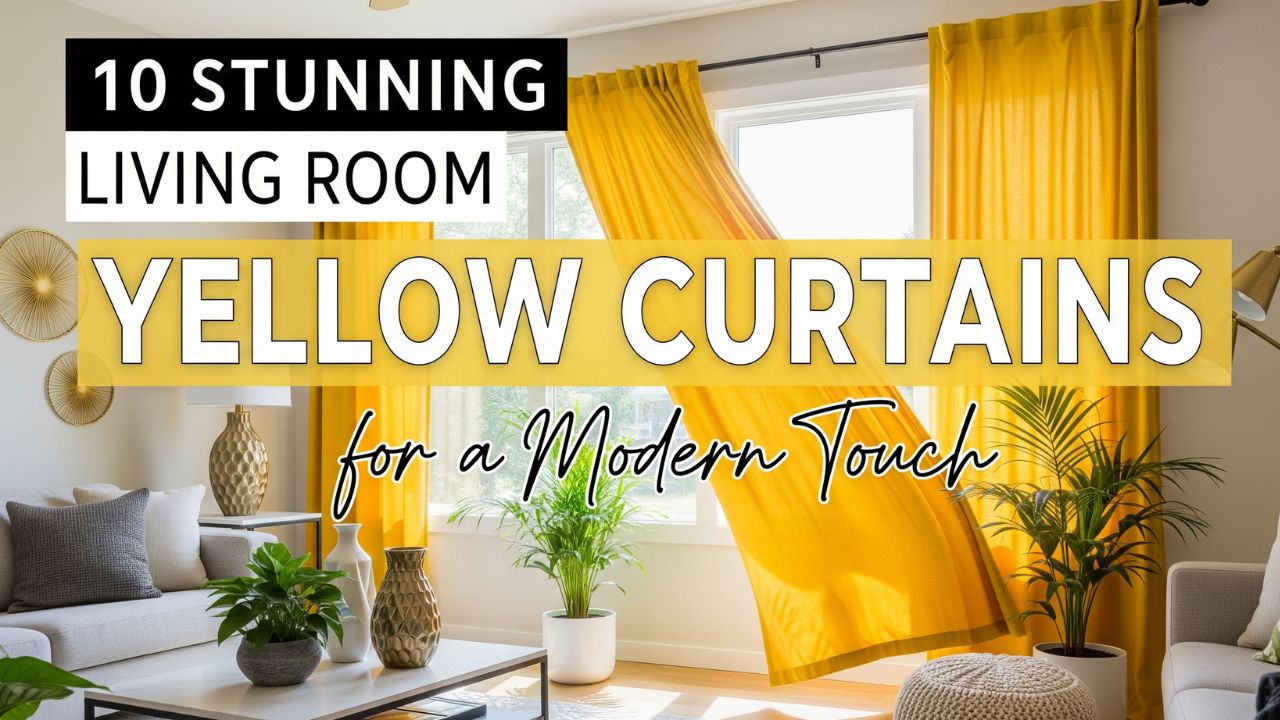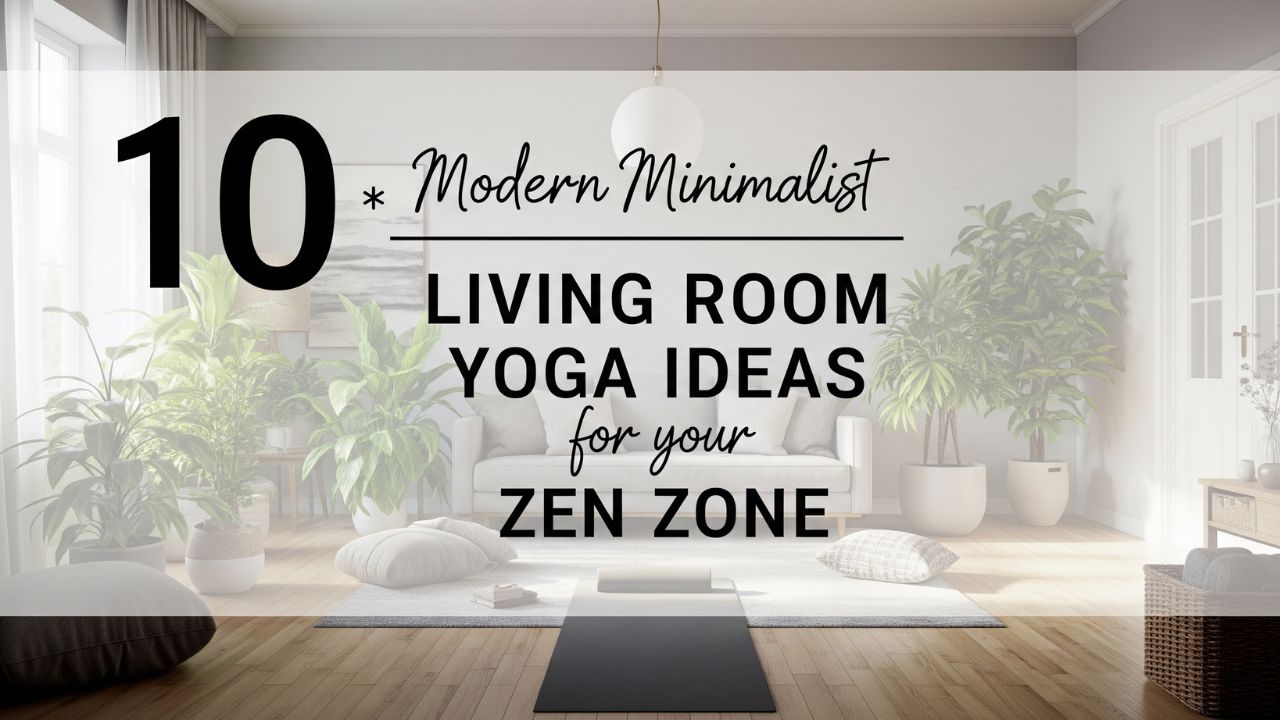In today’s fast-paced world, finding a peaceful space to unwind and rejuvenate is more important than ever. Imagine stepping into a room that not only encourages relaxation but also promotes inner peace and mindfulness.
This is the power of a modern minimalist living room designed for yoga. By blending minimalist design principles with the soothing elements of yoga, you can create a perfect Zen zone right in the heart of your home.
Are you ready to transform your living room into a sanctuary for mindfulness, stretching, and deep breathing? Let’s dive into 10 modern minimalist living room yoga ideas that will help you create your very own serene space.
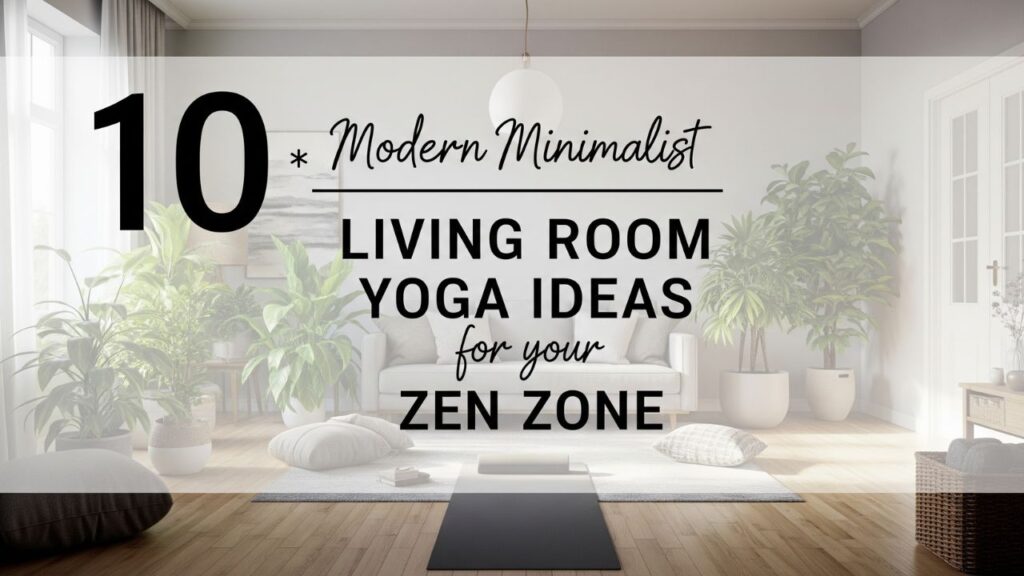
Table of Contents
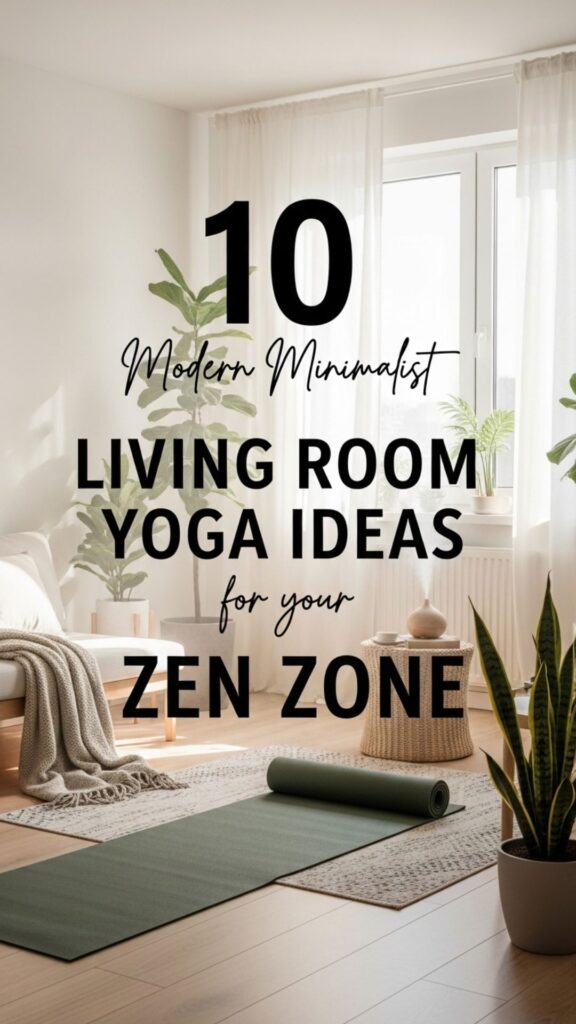
10 Modern Minimalist Living Room Yoga Ideas
1. Sleek and Simple Furniture
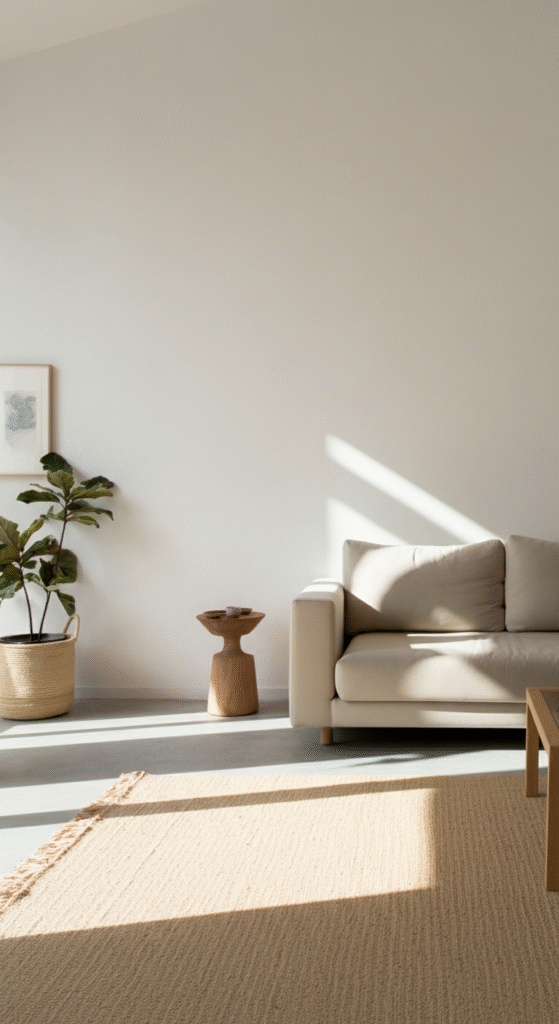
The foundation of a minimalist design lies in simplicity, and this applies to your furniture choices as well. Opt for clean, streamlined pieces that don’t overwhelm the space. A low-profile sofa, a simple coffee table, and a soft, neutral rug are all you need to create a comfortable environment for yoga.
Did you know? The absence of clutter not only improves your room’s aesthetic but also contributes to a calmer state of mind, which is essential for effective yoga practice.
2. Use of Neutral and Earthy Tones
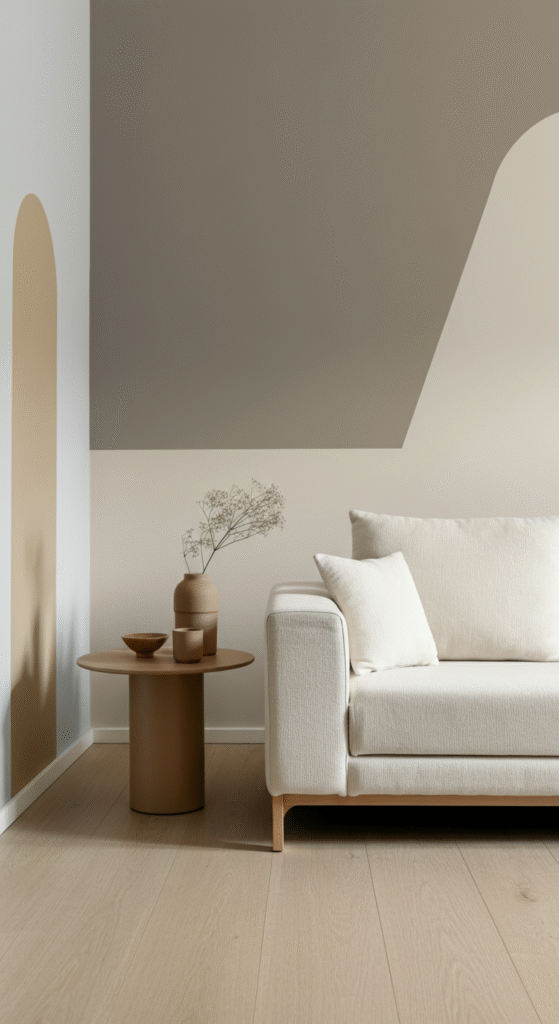
When it comes to the color scheme, keep it neutral. Shades of white, beige, gray, and earthy tones help to create a sense of calm. These colors encourage relaxation, allowing your mind to unwind as you move through your yoga routine. A neutral palette also allows the natural elements, such as plants and wooden furniture, to shine.
Fun Fact: Soft shades of green and brown are often used in yoga spaces because they evoke the feeling of being in nature, which can enhance your practice and relaxation.
3. Minimalist Yoga Mats and Accessories
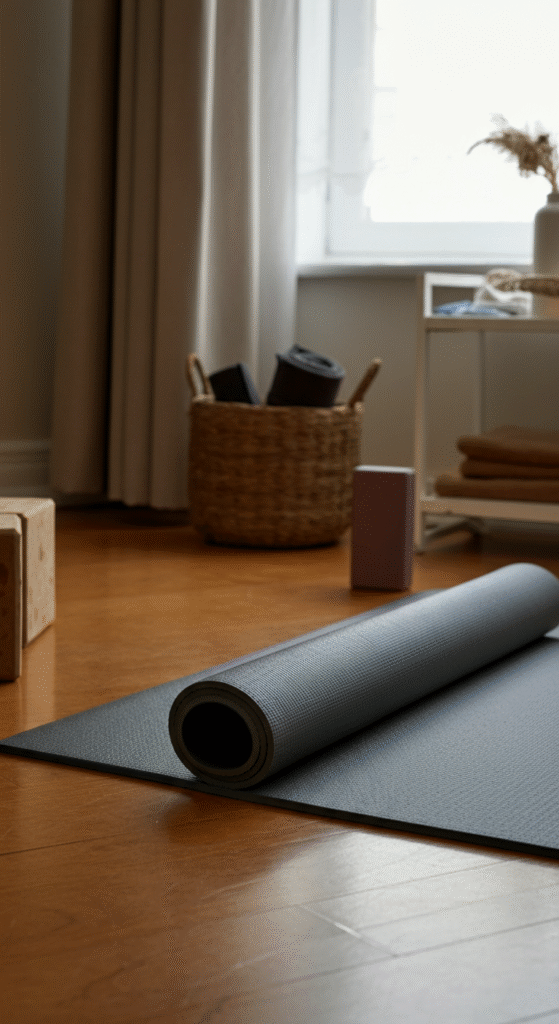
Yoga accessories should be as unobtrusive as possible. Choose a minimalist yoga mat with simple designs or solid colors that blend seamlessly into your living room. Store your yoga props, such as blocks, straps, and cushions, in discreet baskets or shelves, keeping them out of sight when not in use.
Myth Busted: You don’t need an overly decorated or colorful space to have an inspiring yoga practice. In fact, too many bright colors and patterns can cause distraction. Less is more!
4. Incorporating Natural Elements
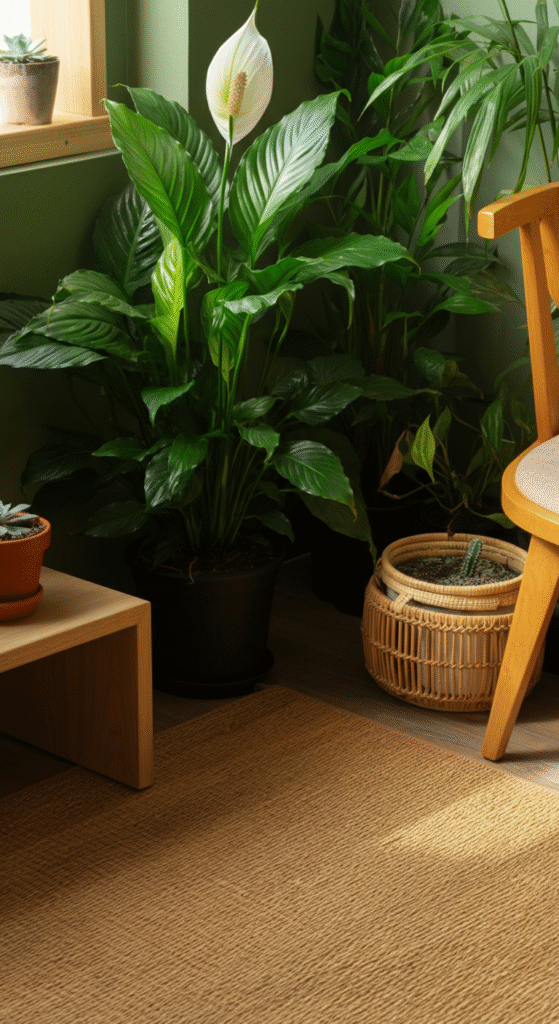
Bring the outdoors inside by adding natural elements like plants, bamboo, or wooden furniture. Plants, such as peace lilies or succulents, not only purify the air but also contribute to a calming atmosphere. Bamboo flooring or wooden accents create a tactile experience that makes your living room feel more grounded and connected to nature.
Did you know? Studies show that spending time around plants can reduce stress levels and improve your overall well-being, making them the perfect addition to your yoga space.
5. Open and Airy Layout
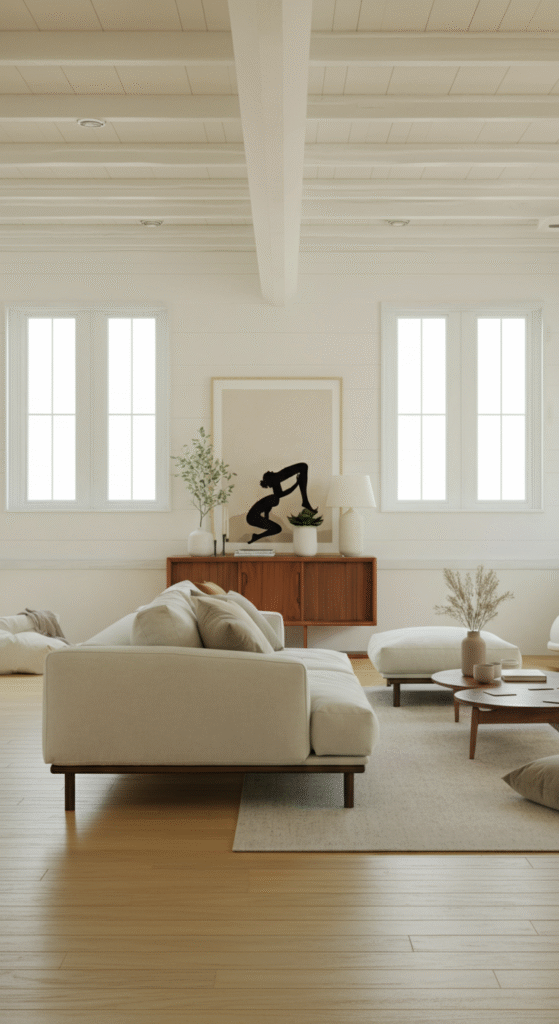
A clutter-free, open layout is essential for any minimalist room, especially for yoga practice. Leave plenty of space around your yoga mat to allow for fluid movement. Avoid overcrowding your room with unnecessary furniture, and opt for a spacious, airy layout that promotes freedom and flexibility during your practice.
Interesting Fact: A room with open space can make your practice feel less confined, promoting better postures and deeper stretches.
6. Soft Lighting and Candles
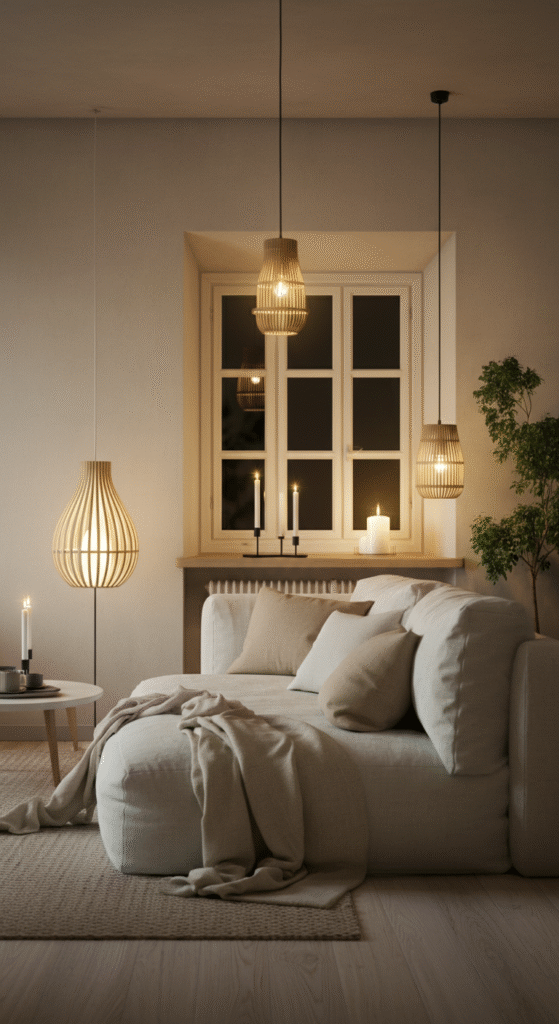
Lighting plays a crucial role in setting the mood for your yoga practice. Soft, warm lighting helps to create a serene atmosphere. Use floor lamps, pendant lights, or table lamps with dimming options to control the intensity of light. Additionally, candles can add a touch of tranquility—especially during evening sessions.
Myth Busted: Bright overhead lights can be harsh and jarring. Soft lighting mimics the natural light of early morning or sunset, helping you ease into your practice and relax deeply.
7. Functional, Multi-Use Furniture
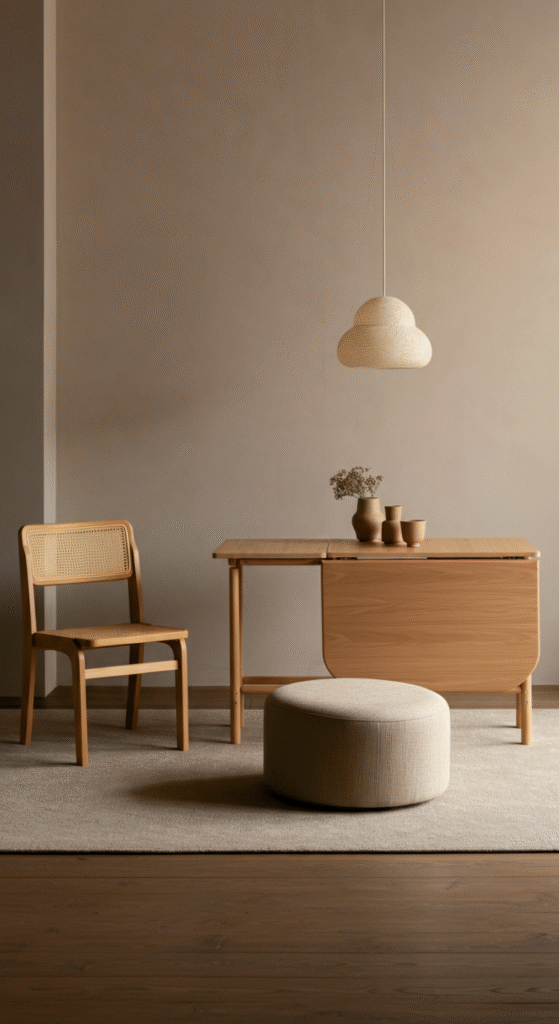
Opt for furniture that doubles as storage or can be easily moved around when needed. A foldable, compact table or an ottoman with hidden storage can help keep the space clean and organized. This ensures that your living room remains open and ready for yoga practice without requiring too much effort to transform.
Did you know? Multi-functional furniture not only saves space but also promotes an organized and stress-free environment, which is key for yoga.
8. A Dedicated Corner for Yoga
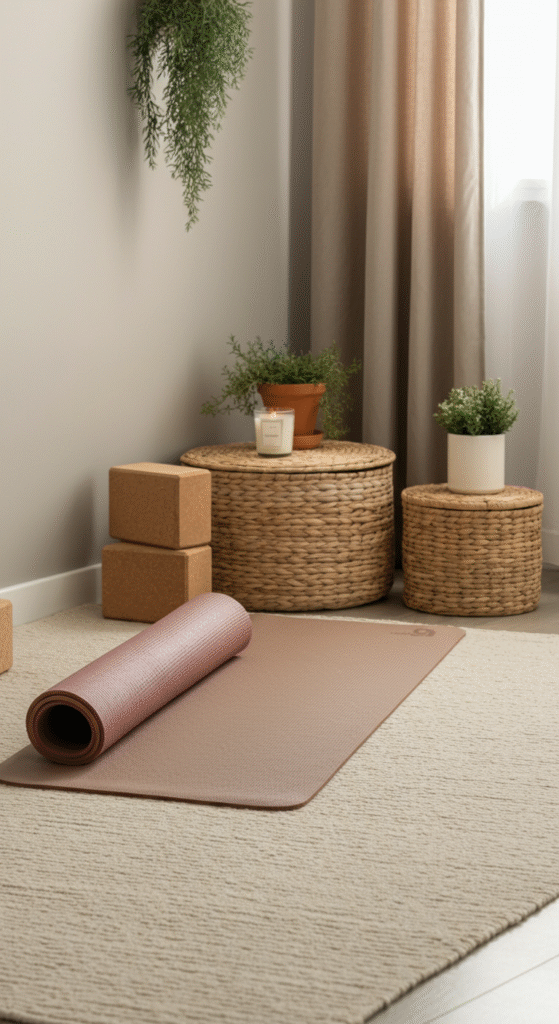
Instead of taking up the entire living room, designate a specific corner or nook for your yoga practice. You can create a small, intimate space with a mat, some candles, and a few plants. This creates a sense of belonging and mindfulness, as you associate that corner exclusively with peace and relaxation.
Fun Fact: Many yoga practitioners prefer creating a specific practice space in their home, as it serves as a mental cue to transition into a calm, focused mindset.
9. Mirrors for Self-Reflection
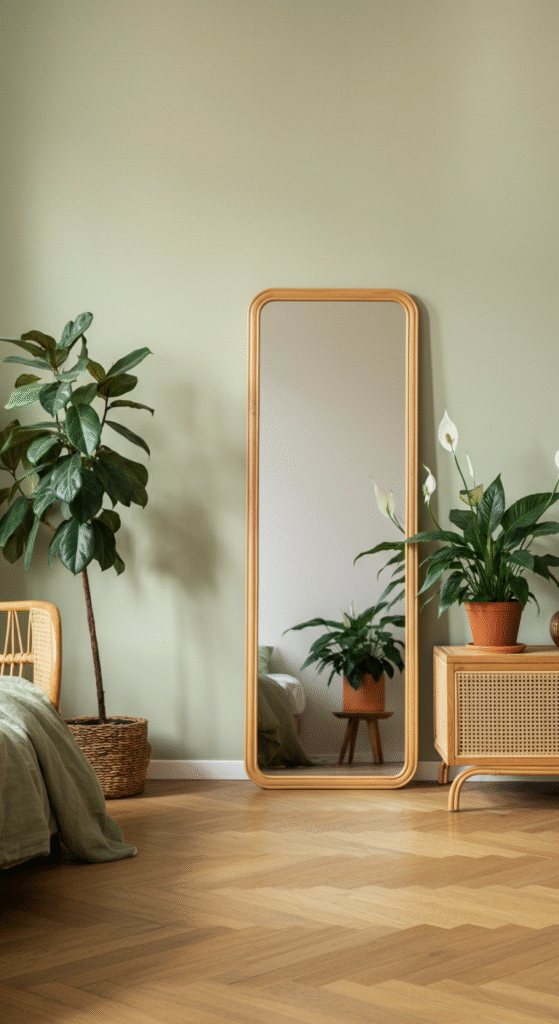
Mirrors can be an excellent addition to a minimalist yoga room, but they should be used sparingly. A full-length mirror positioned on one wall can help you check your posture during practice. However, keep the size moderate—an oversized mirror can dominate the space, detracting from the minimalist aesthetic.
Did you know? Mirrors are not just practical for adjusting poses; they can also help improve your alignment, which is crucial for injury prevention during yoga.
10. Soothing Music and Soundscapes
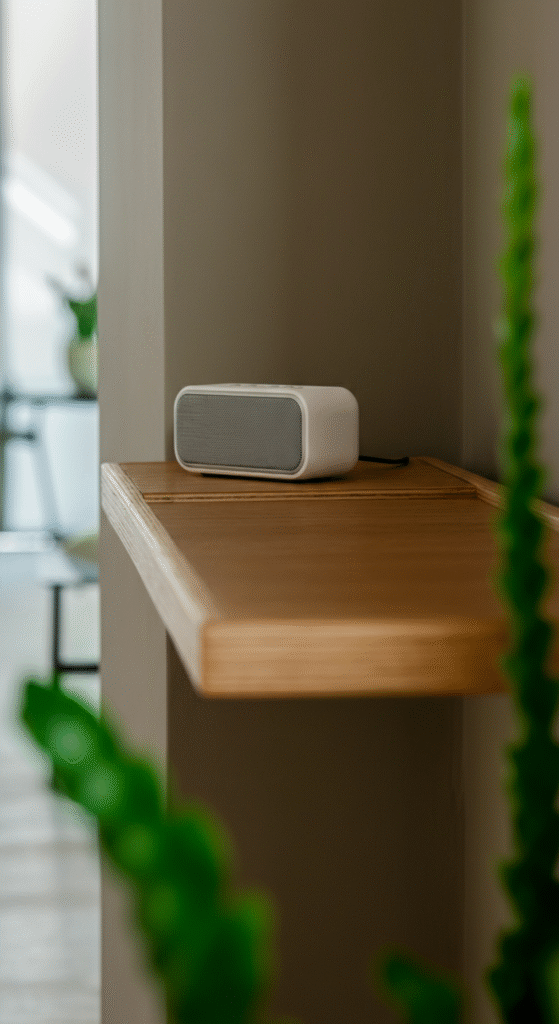
The right sound can elevate your yoga experience. Soft instrumental music, nature sounds, or gentle chimes create a peaceful environment and help you stay centered. Consider adding a small Bluetooth speaker to play calming soundscapes. Keep the sound low and soothing to avoid overwhelming your senses.
Interesting Fact: Studies have shown that listening to calming music during yoga can enhance your relaxation response, making it easier to focus and deepen your practice.
Conclusion
Creating a minimalist living room designed for yoga is not just about aesthetics—it’s about curating a space that supports your mental, physical, and emotional well-being. By incorporating the principles of minimalism with functional design, natural elements, and mindful touches, you can craft a Zen zone that promotes relaxation, focus, and a deeper yoga practice.
So, whether you’re practicing early in the morning or winding down in the evening, your minimalist yoga living room will always be there to help you achieve the perfect balance of peace and strength. Ready to transform your space? Let the journey to your ultimate Zen zone begin!
Frequently Asked Questions (FAQs)
What is the best color scheme for a minimalist yoga room?
Neutral and earthy tones like white, beige, gray, and soft greens are ideal for creating a calming atmosphere.
How much space do I need for yoga in my living room?
A spacious, open layout with enough room to move freely around your yoga mat is essential for comfort and flexibility.
Can I use a mirror in my yoga space?
Yes, a full-length mirror can help with posture alignment, but it should be used sparingly to maintain the minimalist vibe.
What type of lighting is best for a yoga room?
Soft, warm lighting from floor lamps or candles creates a relaxing and peaceful environment for yoga practice.
How can I incorporate nature into my minimalist yoga room?
Add plants like succulents or peace lilies, and use natural materials like wood or bamboo for furniture and accents.
